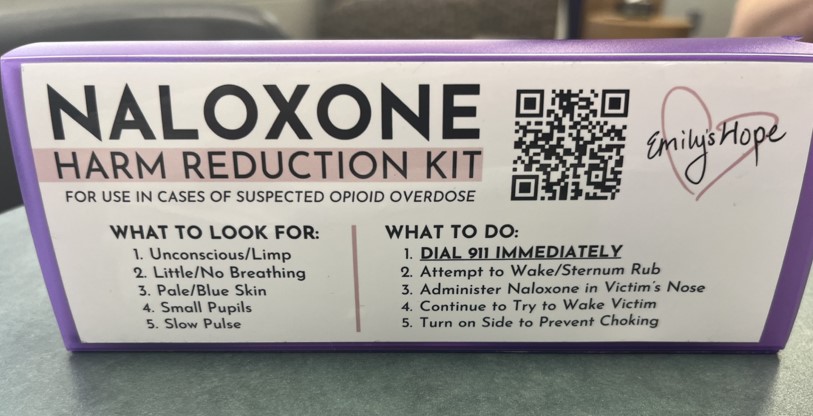SIOUX FALLS, S.D. (KELO) — There are some signs a person may overdosing from fentanyl or a similar opioid. The pale or blue skin, very shallow or no breathing and a slow pulse are just some.
Shellaine Novak has seen those signs in hear roughly 20 years an EMS and now clinical director for Patient Care EMS in Sioux Falls. Novak has also seen patients survive because of naloxone.
Novak carries Narcan, a brand of naloxone. She has seen the results of naloxone firsthand. Naloxone is a medicine that quickly reverses an overdose.
Including for a patient who was not breathing.
“He was not breathing and he was unconscious, and he didn’t have a pulse,” Novak said. “I gave him the Narcan and within 30 seconds he sat up and was talking to me.”
Novak said the patient was with acquaintances who didn’t know the patient had overdosed but did share his background with EMS.
“Along with our regular resuscitative efforts, we were able to give him Narcan and that’s what saved his life,” Novak said.
That patient was fortunate because they were with other people who called for an ambulance. The people also shared the patient’s background of drug use, Novak said.
Novak said naloxone helps increase the chances of overdose survival in Sioux Falls in part, because people are with the patient are willing to call the ambulance and share if the patient used an opioid.
“A lot of times people will call in about a friend. They are very scared for them,” Novak said.
Friends and others shouldn’t worry about punishment if they are using an opioid, instead, they need to call for help, Novak said.
“I’ve found that at party or group gathering people are very forthcoming, especially if we get there before the police do,” Novak said. But police and firefighters also have naloxone and people need to be willing to share with them as well, Novak said.
Michael Gehren, the director of program operations for Emily’s Hope, a foundation dedicated to reducing the stigma around opioid use, overdose and related topics, said education and public awareness about the Good Samaritan laws are making the public more comfortable about talking about naloxone and sharing about opioid use.
“The fact that the (Federal Food and Drug Administration) allows for naloxone to be sold over the counter,” is another big factor, Gehren said.
Research is showing that the availability of naloxone is helping to reduce opioid overdoses around the nation.
That research includes studies in Rhode Island and Massachusetts. Provisional data as of Sept. 1 from the National Center for Health Statistics shows that opioid overdoses declined by two cases from April 2023 to April 2024 in South Dakota. The data cites that cases are underreported because of incomplete data. But the results do indicate the decline in opioid deaths from 2022 84,181 in 2022 to 81,083 in 2023 as cited by the Centers for Disease Control (CDC) on May 15.
Emily’s Hope is working to increase access in Sioux Falls and across the state. The two Tires, Tires, Tires, locations in Sioux Falls have naloxone kits available to the public. So does the Jones 421 building. This Thursday, Falls Community Health will start to have naloxone available for the public, Gehren said.
Emily’s Hope wants to include naloxone, in Public Access Defibrillation (PAD) machine boxes, Gehren said.
Gehren said the public can carry naloxone with them because there could be a situation where a person overdoses near them. “Anyone around you could be at risk,” he said.
Both Gehren and Novak said if someone has symptoms, it’s safe to administer naloxone, even if they are not overdosing.
The difficult piece in naloxone access is the person who uses and overdoses alone.
A study by Case Western University of opioid overdoses in Cuyahoga County, Ohio, showed that “Despite the presence of bystanders in more than half the cases, most victims (74.9%) were using drugs alone at the time of their fatal overdose, mainly at home.” The study covered cases from 2016-2020.
The study from Rhode Island released in May, also cites the danger of those using opioids alone.
Novak said she’s responded to some calls where a friend, out of concern, stopped by the house of a person who had been using opioids alone. Novak has been able in some cases to use naloxone and revive the patient.
The University of Minnesota School of Public Health has a new study to address “the knowledge gap on solitary drug use and interventions to effectively administer overdose reversal drugs.”
Gehren said Emily’s Hope has also developed a curriculum to teach K-12 students about opioid use and misuse. Education is as necessary as the availability of naloxone.


